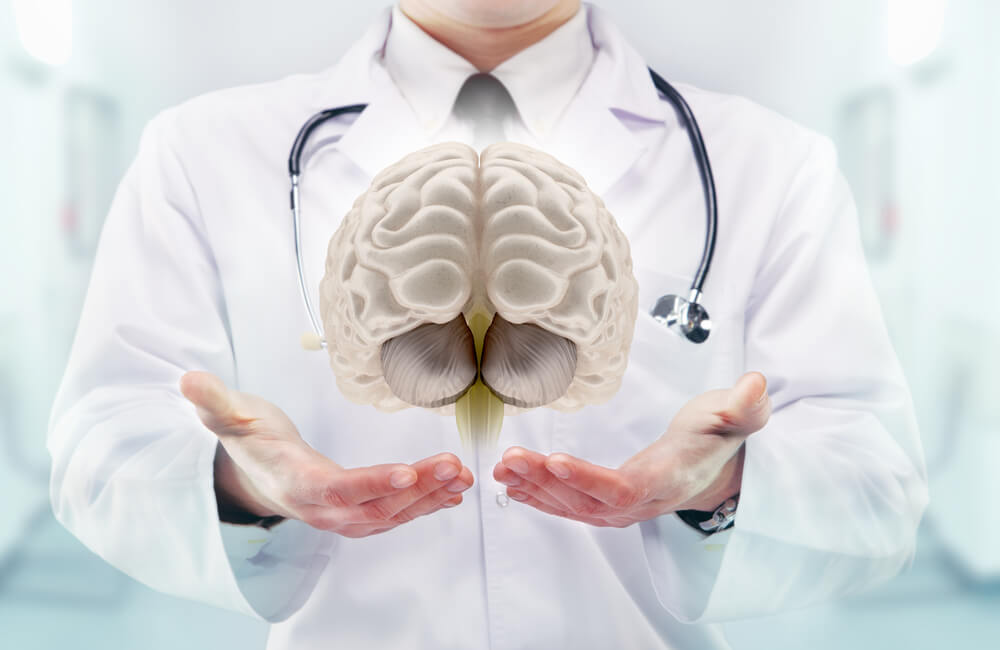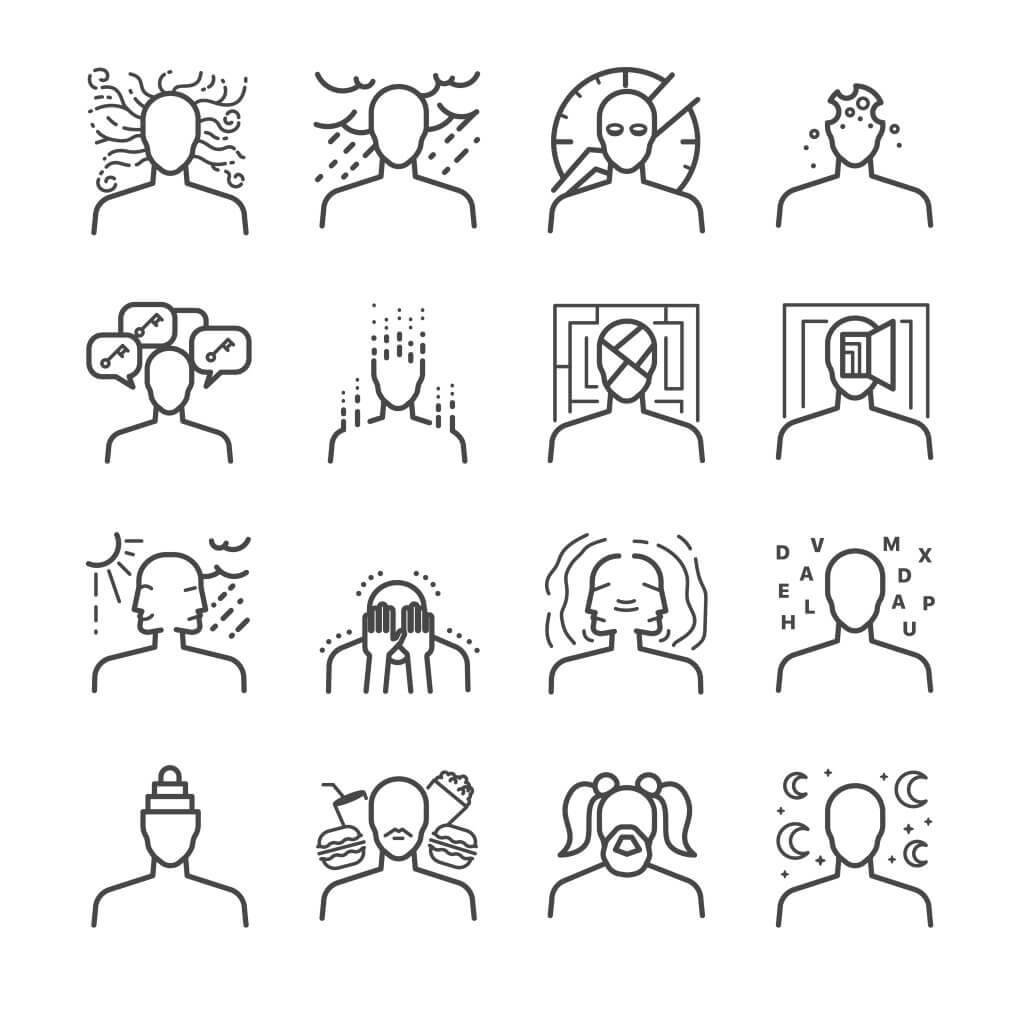Obsessive Compulsive Disorder (OCD)


Escrito y verificado por el psicólogo Bernardo Peña
Obsessive compulsive disorder is a psychopathology characterized by the presence of obsessions (intrusive thoughts that cause anxiety) and / or compulsions (behaviors aimed at relieving anxiety). Both conditions often occur together.
In general, the patient recognizes the irrationality of these obsessions and the uselessness of the compulsions. However, they’re unable to change their thinking and behavior, which makes them more anxious. Additionally, they show a subjective lack of control over their own cognition and behavior.
Obsessive compulsive disorder (OCD)
Although OCD is only one diagnostic category, it’s made up of distinct subtypes:
- Harm-related, sexual, aggressive and/or religious obsession, with compulsions to verify
- Symmetry obsessions with fix-and-repeat compulsions
- Pollution obsessions with cleaning compulsions
- Compulsions to hoard and save
Obsessions as part of obsessive compulsive disorder
An obsession is an intrusive and repetitive thought or image that causes anxiety. The person is aware of the irrationality of their thoughts, but is unable to stop thinking about them.

Most common types of obsessions in children and adolescents:
- Dirt
- Illness and death of themselves or their loved ones
Most common types of obsessions in adults:
- Waste
- Bodily secretions
- Dirt
- Germs
- Environmental pollution
To reduce the anxiety created by these obsessions, strategies are used, such as, for example, changing thoughts, focusing on something positive, walking, reading, etc. Many of us have had nagging thoughts at times.
However, these obsessions are much more intense and intrusive. Therefore, they cause anxiety and can affect daily life.
Compulsions as part of obsessive compulsive disorder

A compulsion is a need to perform acts or persist in mental acts repeatedly. If it isn’t carried out, or it isn’t done correctly, anxiety appears. Compulsions are often related to obsessions, but not always.
Examples of mild compulsions:
- Refusing to walk under a ladder
- Throwing salt over one’s shoulder
- Touching wood
- Rituals and superstitions of all kinds
The most common compulsions are:
- Excessive or ritualized cleaning
- Repetition of rituals and verification behaviors
In the severe compulsive state, these behaviors become stereotyped. If they aren’t done in a very specific way or a certain number of times, a high level of anxiety occurs.
Causes of obsessive compulsive disorder (OCD)
The causes of obsessive compulsive disorder are often speculation. It’s suggested that OCD is a disorder influenced by many different biopsychosocial causes.
Biological causes of OCD

Biological causes are based on data related to brain structure, genetic studies, and biochemical abnormalities. Neuroimaging reveals that people with OCD show increased metabolic activity in the frontal lobe of the left hemisphere. OCD suggests dysregulation in the orbital caudal-frontal circuit.
What does this mean? The orbital frontal cortex is responsible for sending an alert to the rest of the brain when something doesn’t work. When it’s hyperactive, it sends a signal that something is wrong. The connections that occur with the caudal nucleus and the cortex produce an even more intense feeling that something is seriously wrong.
This message is relayed from the thalamus to the caudate nucleus, which normally enables powerful impulses to pass. In OCD this ability is very weak, and disturbing thoughts run wild.
Discover more: Behavioral Addictions
Psychological causes of OCD
There are two psychological theories that explain the symptoms of obsessive compulsive disorder.
Psychodynamic theory
According to psychodynamic theory, obsessive-compulsive behaviors are attempts to reject anal, sadistic, anal-libidinous, and genital impulses. Other psychoanalytic defense mechanisms are considered prominent in obsessive compulsive behaviors. For example:
- Nullification: Stopping the prohibited impulses by performing repetitive activities. For example, washing your hands can mean cleansing yourself of unconscious thoughts. But because the original conflict hasn’t disappeared it’s necessary to repeat the act of nullification over and over again.
- Reactive training: By denying the problems arising from the anal psychosexual phase. For example, patients tend to clean and tidy excessively.
- Isolation: Allows you to separate the thought or action from the effect. They use indifference, intellectualization, and detachment to decrease the anxiety produced by aggressive and sexual thoughts.
Cognitive-behavioral theory

This theory says that obsessive compulsive behaviors appear because they reduce anxiety. A distracting thought or action occurs more often if it reduces anxiety. OCD patients don’t trust their memory and judgment.
They make futile attempts to check if they carried out the behavior or did it correctly. It’s the uncertainty itself that provokes the rituals. Individuals with OCD need evidence that undermines their confidence.
Two cognitive characteristics of individuals with obsessive compulsive disorder:
- Probability bias: This is the belief that having a thought increases the probability that the action will occur
- Moral prejudice: This is the belief that having an immoral thought is as bad as the conduct itself.
You may be interested in: 8 Curiosities about Memory, According to Science
Treatment of obsessive compulsive disorder (OCD)
There are two types of treatments for OCD: biological and behavioral.
Biological treatment for OCD
Selective serotonin reuptake inhibitors (SSRIs) are recommended antidepressants for the treatment of OCD as they have few side effects. It’s effective in between 60 and 80% of people with OCD. However, very frequent relapses occur when the treatment isn’t taken.
Behavioral treatment of OCD
The standard treatment for OCD is exposure with response prevention:
Exposure therapy includes:
- Continuous exposure, real or imagined, to a situation that causes fear or anxiety. This can be done in two ways – through the immediate presentation of the most frightening stimulus or through a more gradual exposure.
Response prevention therapy involves:
- Don’t allow the individual with OCD to engage in compulsive behavior.
- Getting used to the anxiety response generated by not carrying out the compulsion.
Response prevention exposure therapy steps:
- Education about OCD. Rationalization of exposure and avoidance of response.
- Develop a hierarchy of exposure.
- Exposure to scary situations until anxiety subsides.
- Prevent compulsive rituals.
Obsessive compulsive disorder (OCD): conclusions

It isn’t possible to apply a single model because obsessive compulsive disorders develop in some individuals and not in others. The genetic characteristic is activated only by certain environmental stimuli, but it isn’t possible to determine how many traits are manifested in this way.
Disorders such as OCD reflect the interaction of many different genes, brain structures, and neurotransmitters. You’re unlikely to find a simple explanation for OCD.
Therefore, it’s necessary to also consider the psychological and social dimensions to find the answer to why some people are more likely to develop OCD.
Obsessive compulsive disorder is a psychopathology characterized by the presence of obsessions (intrusive thoughts that cause anxiety) and / or compulsions (behaviors aimed at relieving anxiety). Both conditions often occur together.
In general, the patient recognizes the irrationality of these obsessions and the uselessness of the compulsions. However, they’re unable to change their thinking and behavior, which makes them more anxious. Additionally, they show a subjective lack of control over their own cognition and behavior.
Obsessive compulsive disorder (OCD)
Although OCD is only one diagnostic category, it’s made up of distinct subtypes:
- Harm-related, sexual, aggressive and/or religious obsession, with compulsions to verify
- Symmetry obsessions with fix-and-repeat compulsions
- Pollution obsessions with cleaning compulsions
- Compulsions to hoard and save
Obsessions as part of obsessive compulsive disorder
An obsession is an intrusive and repetitive thought or image that causes anxiety. The person is aware of the irrationality of their thoughts, but is unable to stop thinking about them.

Most common types of obsessions in children and adolescents:
- Dirt
- Illness and death of themselves or their loved ones
Most common types of obsessions in adults:
- Waste
- Bodily secretions
- Dirt
- Germs
- Environmental pollution
To reduce the anxiety created by these obsessions, strategies are used, such as, for example, changing thoughts, focusing on something positive, walking, reading, etc. Many of us have had nagging thoughts at times.
However, these obsessions are much more intense and intrusive. Therefore, they cause anxiety and can affect daily life.
Compulsions as part of obsessive compulsive disorder

A compulsion is a need to perform acts or persist in mental acts repeatedly. If it isn’t carried out, or it isn’t done correctly, anxiety appears. Compulsions are often related to obsessions, but not always.
Examples of mild compulsions:
- Refusing to walk under a ladder
- Throwing salt over one’s shoulder
- Touching wood
- Rituals and superstitions of all kinds
The most common compulsions are:
- Excessive or ritualized cleaning
- Repetition of rituals and verification behaviors
In the severe compulsive state, these behaviors become stereotyped. If they aren’t done in a very specific way or a certain number of times, a high level of anxiety occurs.
Causes of obsessive compulsive disorder (OCD)
The causes of obsessive compulsive disorder are often speculation. It’s suggested that OCD is a disorder influenced by many different biopsychosocial causes.
Biological causes of OCD

Biological causes are based on data related to brain structure, genetic studies, and biochemical abnormalities. Neuroimaging reveals that people with OCD show increased metabolic activity in the frontal lobe of the left hemisphere. OCD suggests dysregulation in the orbital caudal-frontal circuit.
What does this mean? The orbital frontal cortex is responsible for sending an alert to the rest of the brain when something doesn’t work. When it’s hyperactive, it sends a signal that something is wrong. The connections that occur with the caudal nucleus and the cortex produce an even more intense feeling that something is seriously wrong.
This message is relayed from the thalamus to the caudate nucleus, which normally enables powerful impulses to pass. In OCD this ability is very weak, and disturbing thoughts run wild.
Discover more: Behavioral Addictions
Psychological causes of OCD
There are two psychological theories that explain the symptoms of obsessive compulsive disorder.
Psychodynamic theory
According to psychodynamic theory, obsessive-compulsive behaviors are attempts to reject anal, sadistic, anal-libidinous, and genital impulses. Other psychoanalytic defense mechanisms are considered prominent in obsessive compulsive behaviors. For example:
- Nullification: Stopping the prohibited impulses by performing repetitive activities. For example, washing your hands can mean cleansing yourself of unconscious thoughts. But because the original conflict hasn’t disappeared it’s necessary to repeat the act of nullification over and over again.
- Reactive training: By denying the problems arising from the anal psychosexual phase. For example, patients tend to clean and tidy excessively.
- Isolation: Allows you to separate the thought or action from the effect. They use indifference, intellectualization, and detachment to decrease the anxiety produced by aggressive and sexual thoughts.
Cognitive-behavioral theory

This theory says that obsessive compulsive behaviors appear because they reduce anxiety. A distracting thought or action occurs more often if it reduces anxiety. OCD patients don’t trust their memory and judgment.
They make futile attempts to check if they carried out the behavior or did it correctly. It’s the uncertainty itself that provokes the rituals. Individuals with OCD need evidence that undermines their confidence.
Two cognitive characteristics of individuals with obsessive compulsive disorder:
- Probability bias: This is the belief that having a thought increases the probability that the action will occur
- Moral prejudice: This is the belief that having an immoral thought is as bad as the conduct itself.
You may be interested in: 8 Curiosities about Memory, According to Science
Treatment of obsessive compulsive disorder (OCD)
There are two types of treatments for OCD: biological and behavioral.
Biological treatment for OCD
Selective serotonin reuptake inhibitors (SSRIs) are recommended antidepressants for the treatment of OCD as they have few side effects. It’s effective in between 60 and 80% of people with OCD. However, very frequent relapses occur when the treatment isn’t taken.
Behavioral treatment of OCD
The standard treatment for OCD is exposure with response prevention:
Exposure therapy includes:
- Continuous exposure, real or imagined, to a situation that causes fear or anxiety. This can be done in two ways – through the immediate presentation of the most frightening stimulus or through a more gradual exposure.
Response prevention therapy involves:
- Don’t allow the individual with OCD to engage in compulsive behavior.
- Getting used to the anxiety response generated by not carrying out the compulsion.
Response prevention exposure therapy steps:
- Education about OCD. Rationalization of exposure and avoidance of response.
- Develop a hierarchy of exposure.
- Exposure to scary situations until anxiety subsides.
- Prevent compulsive rituals.
Obsessive compulsive disorder (OCD): conclusions

It isn’t possible to apply a single model because obsessive compulsive disorders develop in some individuals and not in others. The genetic characteristic is activated only by certain environmental stimuli, but it isn’t possible to determine how many traits are manifested in this way.
Disorders such as OCD reflect the interaction of many different genes, brain structures, and neurotransmitters. You’re unlikely to find a simple explanation for OCD.
Therefore, it’s necessary to also consider the psychological and social dimensions to find the answer to why some people are more likely to develop OCD.
- American Psychiatric Association. (2013). Diagnostic and Statistical Manual of Mental Disorders, 5th Edition: DSM-5. Washington D.C.: American Psychiatric Association .
- Belloch, A., Sandín, B., & Ramos, F. (2008). Manual de psicopatología. Madrid: Mc Graw Hill.
- Caballo, V. E., Salazar, I. C., & Carrobles, J. A. I. (2014). Manual de psicopatología y trastornos psicológicos. Pirámide.
- Peña-Herrera, B. (2018) Psicopatología General. Samborondón: Universidad Espíritu Santo – Ecuador
- Vallejo Pareja, M. Á. (2001). Tratamientos psicológicos eficaces para el trastorno obsesivo compulsivo. Psicothema, 13(3).
Este texto se ofrece únicamente con propósitos informativos y no reemplaza la consulta con un profesional. Ante dudas, consulta a tu especialista.







